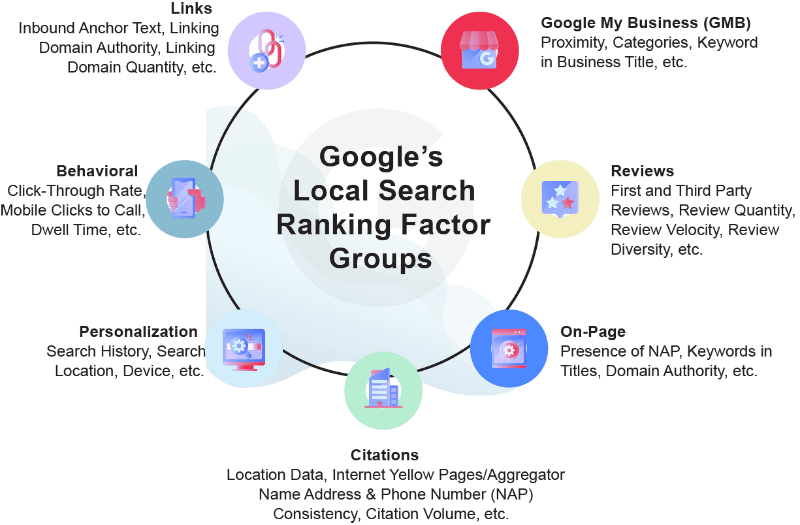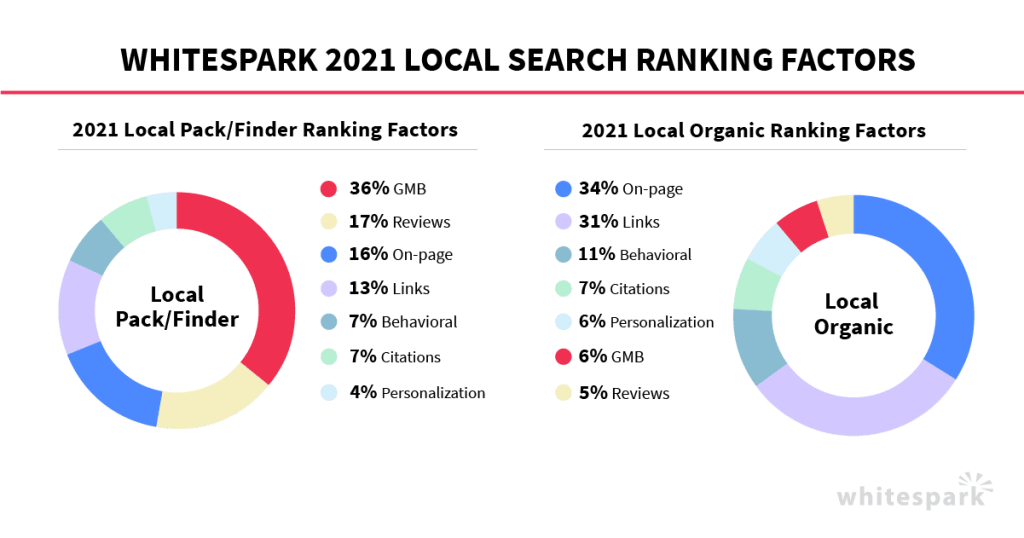
Is the Pharmaceutical Sector in Saudi Arabia Unlocking the Full Potential of Online Visibility and E-Reputation?
In today’s digital-first landscape, a pharmacy’s online reputation and local visibility can strongly influence a…

Table of contents
What are the criteria for local SEO ranking? Which method does Google use? What should you focus on to get to the first positions of the Local Pack in local search results?
Here is a list of relevance criteria the search engine uses for local SEO. It is based on some public parameters shared by Google and on the results of a 2021 study by Whitespark.
Important: Whitespark does not know more than us about how the algorithm really works. Google hasn’t provided any information about it. However, years of studies, analysis and research allowed to make the following conjectures supported by facts and by experts’ statements.
Google doesn’t really go into details about the criteria that affect its ranking. What we know is that its method is based on 3 pillars. It’s the combination of these factors that helps the algorithms determine the better results according to the user’s search.
Google evaluates how well your business listings match the user’s query. To do this, the algorithms must be “nurtured” with updated and detailed business listings. This will make your listings appear higher in the search results page.
In the case of a discovery research, the proximity of establishments to the user is very important. If the location is not specified in the research, Google calculates the distance between the user and the points of sale searched. If they are relevant, the closest ones will tend to be at the top of the ranking.

It is an indicator of reputation taken into account by Google. The search results take into account the “fame” of places in real life. Some are better known than others and, as such, they move up more easily in the search results. Big brands, hotels, museums, monuments or famous restaurants can benefit from it.
It relies on several parameters:
Google makes the deliberate choice not to give more details about the functioning of its search algorithm
Why? “To make the ranking system as fair as possible for everyone.” Also, to make sure no one finds a backdoor to get a better place in the local ranking.
Google also insists on the optimization of the listings. This is a prerequisite to appear in the search results.
What are the best practices to follow?
Name, physical address, phone number, description, categories, hours, exceptional hours, website, attributes… Make sure all this information is up-to-date.
This will allow Google to determine the relevance of your businesses based on local searches. The more data available, the easier it is.

The attributes are used to provide more information about the services available and the benefits offered.
No need to do “keyword stuffing” in the description by repeating your keywords. Google doesn’t like it and might even penalise you.
When all your listings are filled in and proofread to avoid errors, Google must verify them.
Depending on your profile (network of less or more than 10 points of sale), the verification process is different.
Learn more about the verification and group verification of business listings.
Don’t forget to update them when they change and to fill in your schedules for holidays and special events. This is a positive signal for Google but also a valuable help for your customers. They always know when they can or cannot visit your establishments.
In addition to the marketing advantage of beautiful photos, they also boost your SEO. The more pictures, with good quality, and the more views your photos get, the better your establishments will be referenced.
In 3 words: nurture your e-reputation. Customer reviews have a proven impact on local SEO. They improve your online visibility and encourage users to visit your establishments. That’s why you need to take the time to answer them.
The whole point of business listings is to boost your web-to-store traffic. Adding a part of your catalogue on your listings is not superfluous. Your potential customers will be able to have a first look at your catalogue.
To carry out its study, Whitespark asked local SEO experts for the criteria they considered the most impactful for the SEO. The answers were purely subjective, but they are nonetheless interesting.
They are based on 132 potential referencing criteria divided into 7 categories, detailed below:

The professionals interviewed later ranked these factors in order of importance. For the ranking in the Local Pack and Local Finder first. Then for referencing in local organic results.
Let’s see what the study showed, especially for the Local Pack and Local Finder:

We already knew that, but Google Business Profile listings are essential for the local visibility of your business. Updating and optimizing your listings is essential.
According to the study, here are the top 5 criteria that influence the local ranking of Google Business Profile listings:
Now you know all about the important criteria for local SEO. These are the parameters that influence Google’s local ranking. Therefore, it is important to pay special attention to it if you want to appear high in the search results.
Want to easily develop your business through the Internet? It’s possible thanks to Partoo!
Download our 2025 barometer and discover which companies manage their online reputation the best, along with recommendations to enhance your business!
Receive our best articles and practical guides directly in your inbox every month